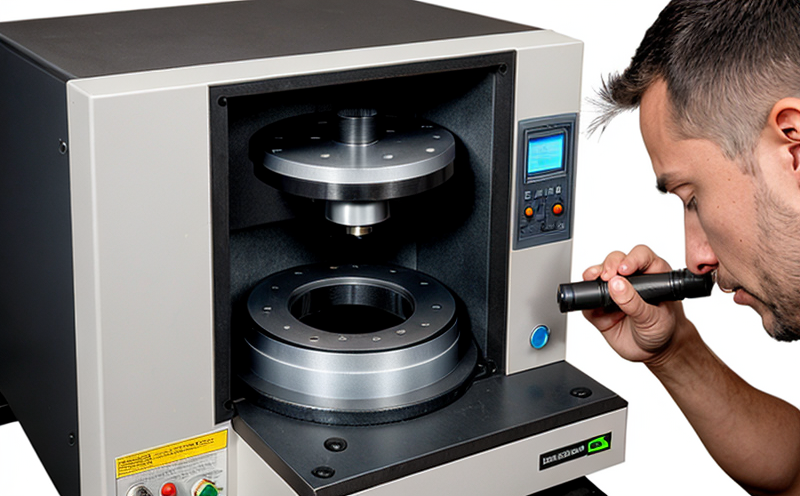ASTM E155 Visual Inspection of Microstructure by Radiographic Standards
The ASTM E155 visual inspection of microstructure using radiographic standards is a critical procedure in ensuring the integrity and quality of materials used in additive manufacturing (AM) and 3D printing processes. This test is vital for identifying defects, grain structure irregularities, porosity, and other microstructural features that can affect the mechanical properties and reliability of parts.
ASTM E155 specifies a radiographic method to visually examine metallographic sections for evaluating the presence and distribution of various constituents. The standard ensures consistency in the inspection process by providing detailed guidelines on specimen preparation, irradiation parameters, film processing techniques, and interpretation criteria. This service is particularly important in sectors like aerospace, automotive, and medical devices where part failure can have severe consequences.
The visual inspection involves the use of radiography to generate images that reveal internal structures not visible from the surface. These images help identify potential flaws such as voids, cracks, and segregation. The process begins with carefully preparing a metallographic sample by polishing it until a mirror-like finish is achieved. The sample is then exposed to radiation, typically X-rays or gamma rays, which penetrate through the material and create an image on film.
The resulting radiographic images are analyzed for adherence to specified standards. For instance, ASTM E155 specifies that certain features must be present in a defined area, with specific sizes and distributions allowed. This ensures that any deviations from these guidelines can be identified and addressed early in the manufacturing process. The service also involves detailed reporting of findings, which is crucial for compliance with industry regulations and internal quality control.
The importance of this test lies in its ability to provide a non-destructive means of inspecting complex geometries and thin cross-sections that are common in AM parts. By ensuring that the microstructure meets specified standards, manufacturers can enhance product reliability and reduce costly failures. This service is particularly beneficial for R&D teams looking to optimize material properties or troubleshoot issues during development.
Compliance with ASTM E155 is essential for companies operating in highly regulated industries such as aerospace and medical devices. The standard ensures that all parts are produced consistently and meet the highest quality standards, thereby protecting both the manufacturer's reputation and the safety of end-users.
Why Choose This Test
- The ASTM E155 test provides a non-destructive method for inspecting metallographic sections, ensuring that defects and irregularities are identified early in the manufacturing process.
- This service is particularly beneficial for industries where part failure can have severe consequences, such as aerospace and medical devices.
- It ensures compliance with international standards, thereby enhancing product reliability and protecting the manufacturer's reputation.
- Provides detailed visual images of internal structures not visible from the surface.
- Identifies defects like voids, cracks, and segregation that can affect part performance.
- Ensures consistency in inspection processes through standardized guidelines for specimen preparation and interpretation criteria.
Competitive Advantage and Market Impact
The implementation of ASTM E155 visual inspection by radiographic standards offers significant competitive advantages. By ensuring that all parts meet strict microstructural standards, manufacturers can enhance product reliability and reduce the risk of costly failures. This is particularly important in sectors where quality is paramount, such as aerospace and medical devices.
Compliance with this standard not only ensures high-quality products but also helps companies maintain a strong reputation for reliability and safety. In competitive markets, this can translate to increased customer trust and loyalty, potentially leading to greater market share. Additionally, the ability to consistently produce parts that meet the highest quality standards can open up new opportunities in highly regulated industries.
For R&D teams, this service provides valuable insights into material properties and potential issues during development, allowing for optimization of processes and materials. This can lead to innovations that not only improve product performance but also reduce costs through more efficient manufacturing techniques. The service’s role in ensuring compliance with international standards is crucial for companies looking to expand their operations internationally.
In summary, the ASTM E155 visual inspection by radiographic standards is a vital tool for maintaining high-quality standards and ensuring reliability across various industries. It provides competitive advantages that can significantly impact market performance and customer trust.
Use Cases and Application Examples
| Industry Sector | Possible Use Case |
|---|---|
| Aerospace | Inspection of engine components for defects that could lead to catastrophic failure. |
| Automotive | Evaluation of gear materials in transmissions for wear resistance and durability. |
| Medical Devices | Assessment of implantable devices for biocompatibility and structural integrity. |
| Military Equipment | Checking of critical components like armor plating for defects that could affect performance in combat situations. |
- Aerospace: Ensuring that engine parts are free from cracks and other defects that can lead to catastrophic failure during flight.
- Automotive: Evaluating the wear resistance of gear materials used in transmissions to ensure durability under heavy use.
- Medical Devices: Assessing implantable devices for biocompatibility and structural integrity to ensure patient safety.
- Military Equipment: Checking critical components like armor plating for defects that could affect performance in combat situations.





